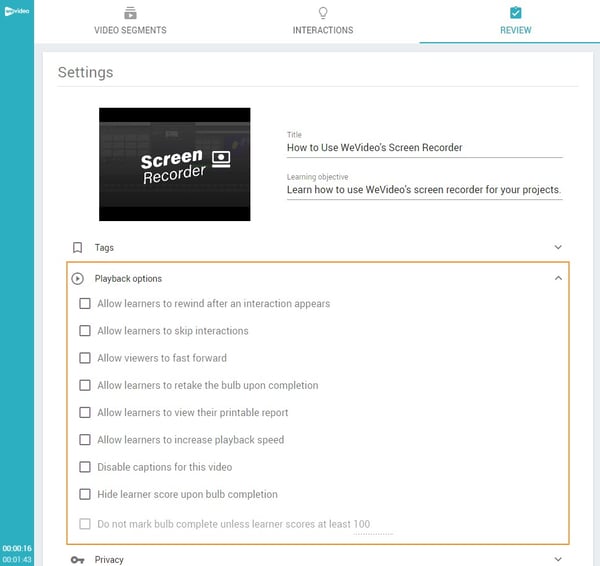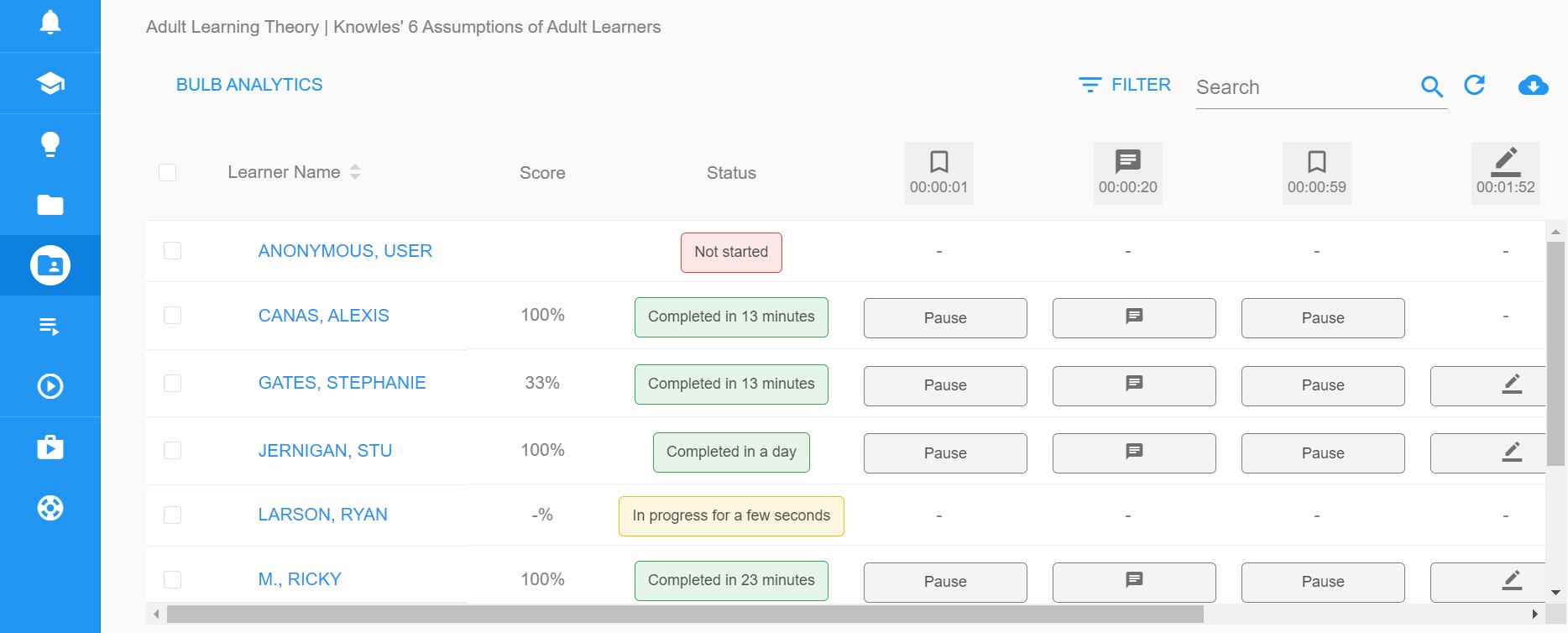
Education technology expert Elliot Masie said, "We need to bring learning to people instead of people to learning." Video provides the medium for learning and development whenever, wherever. Taking the train to work? Upskill on the go.
Learning and development (L&D) strategies boost profitability. Most everyone’s pocket holds a cell phone. Helping employees grow beyond the workday is vital. So let's look at four impactful ways video enhances L&D, along with:
- What is learning and development (L&D)?
- Why is learning and development important?
- How video is changing the L&D industry
- Key performance indicators (KPIs) of Learning and development strategies
What is learning and development (L&D)?
Learning and development hold distinct purposes but work in unison to help companies build an effective workforce.
Learning is growth; development is enhancement.
Learning is acquiring new knowledge and skills in employees, while development is about nurturing those skills and targeting them toward measurable areas of business development.
Imagine a company adopts a new tool for project management. Expectations abound. Executives frequently email about the tool's potential impact on the bottom line.
Managers in charge of teams implementing the tool might feel isolated without a positive culture of L&D.
Frustrated. Judged. Lost.
L&D is empowerment. It fosters engagement, and its results are tangible. Organizations investing in employee development report 11 percent greater profitability and are twice as likely to retain their employees.
With effective learning and development strategies in place, when managers are tasked with rolling out new project-management software, L&D paves the way for effective implementation.
This might look like:
-
Providing ongoing training on hard and soft skills so managers navigate any pushback they receive.
-
Creating collaborative spaces for managers to brainstorm and support one another in the software's rollout.
-
Developing transparent communication structures between management, HR, and executive leadership — allowing for openness, feedback, and honesty.
- Encouraging and funding certification and continuing education opportunities. At a basic level, learning and development (L&D) consists of everything geared toward bettering employees.
Some common learning strategies and methods include:
- Formal learning
- Mentoring
- Informal learning
- Cross-training
- New employee training
- Experiential learning
- Coaching
- Skill building
- Targeted training
- Remote training
Why is learning and development so important?
A company's financial success depends partly on its learning and development strategies. According to a recent survey, 80 percent of CEOs cite the need for new skills as their most significant business challenge.
Proactively building employee skills is crucial. Almost 90 percent of L&D professionals say growing the workforce's competencies will help the general workforce navigate the evolving nature of business.
Get this: 1.1 billion jobs will be disrupted in the next five years as labor markets fluctuate in response to technological change, globalization, and population aging.
L&D provides a buffer.
US companies spent more than $100 billion on learning & development in 2022. Not only does this help employees upskill and adapt to change, 94 percent of people stay at a company longer if their employers invest in their careers. Lowering employee retention rates is crucial.
A high employee turnover rate significantly drains institutional resources: recruitment and onboarding expenses add up. Companies that enhance their learning and development strategies will keep their top performers within their ranks and create a culture of perpetual improvement – both of which contribute to a more satisfied and loyal workforce.
Similarly, L&D can foster creativity and innovation within an organization. The ability to innovate is a crucial driver of competitiveness. By investing in L&D initiatives such as problem-solving and collaborative programs, businesses can help themselves achieve long-term success and resilience.
How video is changing the L&D industry
Eighty-eight percent of companies use training videos to encourage high-level employee development. Here's why:
1. Video empowers on-demand learning
With interactive video, you can gauge user engagement and provide individualized learning opportunities for employees.
For example, in WeVideo's interactive video design studio, Playposit, learners can only advance if they've completed specific touchpoints. There's no fast-forwarding. Learners get all the benefits of self-paced, asynchronous learning without the temptation to cut corners.

When you create interactive video content in PlayPosit, you can customize playback options for as flexible (or progressional) of an experience as you want.
Interactive videos include clickable elements such as:
- Multiple choice questions
- Questionnaires
- Different video paths
- Decision-making scenarios
- Drag-and-drop elements
- Polls
- Informational overlays
- Fill-in-the-blanks
Explore more: 5 Ways to Retain Staff with Interactive Video
2. Interactive video engages learners
Interactive video requires user input. A standard sales training video transforms into dynamic content requiring thought, feedback, and collaboration.
A remote-working account executive signs on to an annual online training session.
Know what she's thinking? Same type of video as the last two years. Great. But this year's different. The Director of Sales coordinated with the company's Chief Learning Officer to maximize the training's effectiveness. Before, the two-minute video showed a successful cold caller navigating several objections at different points in the call. That's it.
Now, the video utilizes PlayPosit to help foster collaboration in peer review forums. These discussions open up conversations between teammates on their next morning briefing.
3. Video encourages critical thinking
Interactive video is a great learning and development strategy since it can deliver scenario-based lessons that encourage critical thinking, problem-solving, and decision-making skills.
For example, learners may be presented with a demanding customer in their daily routines. Interactive videos mimic these situations less demandingly and allow for a stress-free way to practice communication and conflict resolution they may face with customers. This L&D training leads to better customer service, increases client satisfaction and loyalty, and improves your company's reputation.
Learning and development strategies using video promote a culture of learning. Given how quickly technology has advanced in the workplace, many employees worry that they can be replaced by automation and artificial intelligence. They want to expand their skill sets to maintain their competitive edge. As a result, high-performing employees desire regular opportunities for development and growth. Interactive video, which requires less time and resources than in-person training, offers high engagement levels.
Providing employees with opportunities for growth does more than attract top talent—it retains them. Employees who feel valued and recognized for their contributions are more likely to stay with an organization for the long term—and a higher retention rate means less time and money spent recruiting and training new staff.
4. Interactive video can be personalized
Traditional video can feel impersonal, like a mass email—everyone will learn something from it, but no one will feel like they have to reply. Interactive video eliminates that anonymity by tailoring lessons to each employee. Content can address them by name, including branched course paths and interactive touch points that make sense for their specific roles.
L&D pros can assign certain employees to specific training by creating a playlist. All of the resources you create with PlayPosit are saved to the cloud and easily accessible, and from there, you have the option to:
- Grant staff access to a shared media library.
- Enable timestamped comments for learners to ask questions at any time.
- Offer multiple playlists focusing on different topics.
Besides keeping you organized, playlists are an excellent way to signal that growth and development are a company priority and ongoing goal.
Not only does personalization boost learner engagement, but it also makes employees feel more seen—and valued—by their employer. This process increases their job satisfaction and engagement, making them more likely to work harder, smarter, and more creatively for your organization. When you invest in your employees, your employees invest in you.
Overall, using interactive video as a learning and development strategy can improve employee performance, engagement, retention, innovation, and organizational culture, leading to better business outcomes and a more successful organization.
Key performance indicators (KPIs) of learning and development strategies
Since learning and development are tied to objectives and key results (OKRs), it's important to consider a few KPIs tied directly and indirectly to a company's L&D strategy.
Net promoter score
Gauging customer satisfaction through a net promoter score (NPS) is a standard KPI tied back to L&D strategies. Businesses poll customers for satisfaction and ask how likely a customer would be to advocate for a company's products or services positively.
Retention of new skills and knowledge
Development is the long game of L&D. How well employees retain their knowledge from L&D opportunities is an essential KPI often tied to job performance.
With PlayPosit's analytics dashboard, L&D pros can monitor learner attempts, completion rates, course progress, and more. Plus, they can gather employee feedback by adding responses or polls to training materials.

Track individual learner progress and scores, or access high-level admin views that detail engagement across your programs.
Business performance metrics
Effective learning and development translate into success. Think increased sales, excellent NPS metrics, and outstanding client retention rates. OKRs tied to specific L&D objectives help executive leadership better prepare employees, address issues, and create new L&D strategies that address gaps and issues.
People remain the top influence on business success. Companies that hone their learning and development strategies are better prepared. They're more ready for changes. As advancements continue, human capital remains a top priority. L&D ensures its nurtured and nourished.
Discover why businesses benefit from using interactive video
